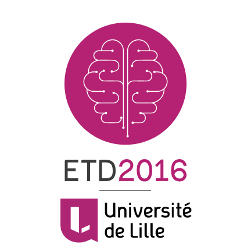Providing a promising field of research, Electronic Theses and Dissertations (ETDs) seem to be considered as educational treasures which provide academic institutions with both physical and virtual credibilities and honors. The number of studies on ETDs has increased in recent years, worldwide, with different rate and directions due to the different physical, geographical, technical contexts they are preserved, managed and represented. As this domain has some fixed dimensions like physical, technical, and users' demands similarities, we believe by mapping the trend, we would help the to-be research projects visually be aware of previous applicable experience, preventing to experience what has been experienced, so far. And, this would become more important when decision making in this field usually brings much financial burden to institutes.
The purpose of the present research is to examine the publications on ETDs, as a research domain. Here, we include academic papers and conference proceedings to present key publications, key authors and potential key research groups, geographic and institutional topic scattering of publications, and the growth rate. Keywords have been selected trying to include a broad span in the domain history of digital and electronic theses and dissertations. Related databases have been chosen (such as ProQuest, Google Scholar, Web of Science, ERIC and ACM Digital Library) and more is still under investigation. Several tools would be used to analyze what would be achieved through searching process, according to the fields and the number of retrieved records (title, author, abstract, and keywords for 450 records, so far), Antconc, NodeXL, GeoViz, and Bibexcel, along with Clementine software for any other possible analytic patterns. The Google Earth and Google Fusion would be also applied to map any distinguished topic dominance geographically. Besides, a concept map for ETDs would be presented to represent the knowledge structure of the ETDs domain in the scholarly world. The result of this study would give a holistic understanding of ETDs trends and concerns, at one glance.
On the authors:
Shahed Rashidi is a PhD student at the Department of Information Science and Knowledge Studies, University of Tehran (UT), Iran. She has enrolled in several MA courses on Religious Studies courses at Missouri State University, USA (2012). She has seven years of experience as a private research assistant in several national and international projects. Being a T.A at Information Science Laboratory at the Central Library and Documentation Center at UT, she is now focused on her proposed project on promoting the ETDs section services. Among her academic research interests are ETDs Management, Information Retrieval Models, Ontology Design, Research Methodology, and Religious Informatics.
- Picture

 PDF version
PDF version

